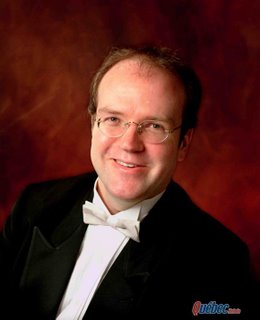This Week in Toronto (June 22 - 28)
Labels: Brott Music Festival, Krisztina Szabo, Music at Sharon, Toronto Symphony
Labels: Brott Music Festival, Krisztina Szabo, Music at Sharon, Toronto Symphony
 Photo: conductor Bernard Labadie
Photo: conductor Bernard LabadieLabels: Magic Flute, This Week in Toronto, Toronto Symphony
In embarking on the 2002 renovation, its owners finally admitted that the RTH acoustics were inferior and engaged one of the best acousticians in the business, the late Russell Johnson, to fix them. Had Johnson been hired at the building design stage, many of the problems would have been avoided. Unfortunately, coming to the job 'after the fact', he was impossibly handicapped by having to make a silk purse out of a sow’s ear.
The renovation had to be done and was clearly long overdue, but RTH remains a colossal mistake. The owners of the hall embarked on the original building project without knowing what they were doing and stuck the orchestra and the city with an architectural and acoustical turkey. RTH literature (“The enhancement project altered the hall, while at the same time honoured and revalued Arthur Erickson’s original design.”) suggests they are still oblivious to the damage they have done.
The 2002 renovations certainly improved RTH, but it is still far from a great concert hall. The sound has much more presence than it did and the upper strings don’t sound computer generated, but they don’t have much body or warmth either. The lower strings sound as bland and undernourished as ever.
If Roy Thomson Hall remains a disappointment, it has at least become a tolerable place in which to hear and to make music; as such, it is far more successful than Salle Wilfred-Pelletier at Place des Arts in Montreal.
Paul E. Robinson is the author of Herbert von Karajan: the Maestro as Superstar and Sir Georg Solti: his Life and Music, both available at http://www.amazon.com/. For more about Paul E. Robinson please visit his website at http://www.theartoftheconductor.com/
Photos by Marita
Labels: classical music, conductors, Kurt Weill, Oundjian, Toronto Symphony, Ute Lemper